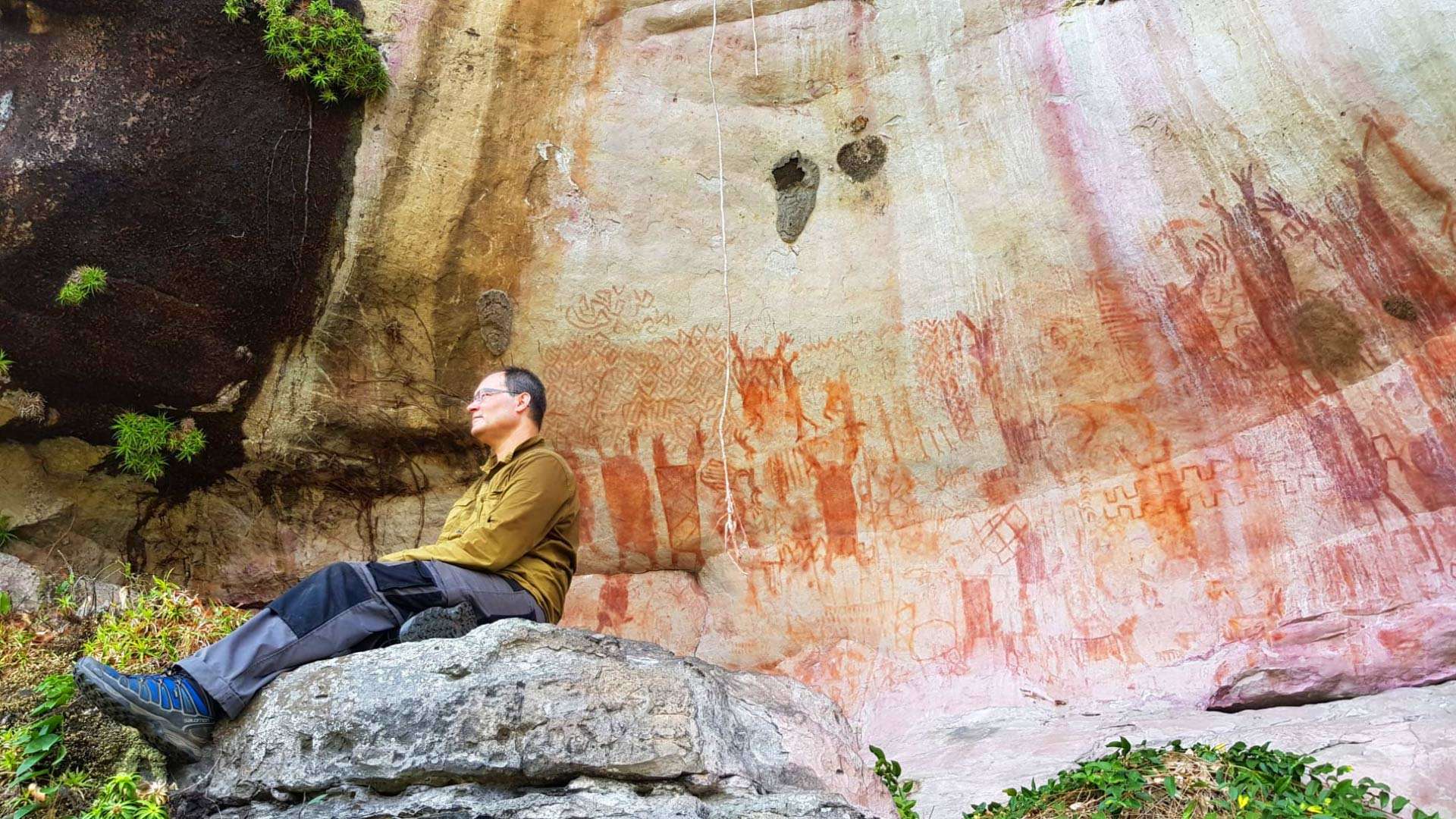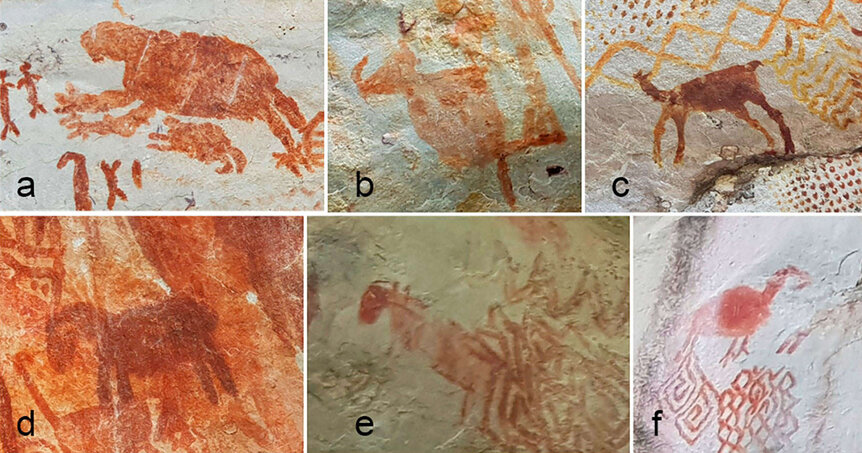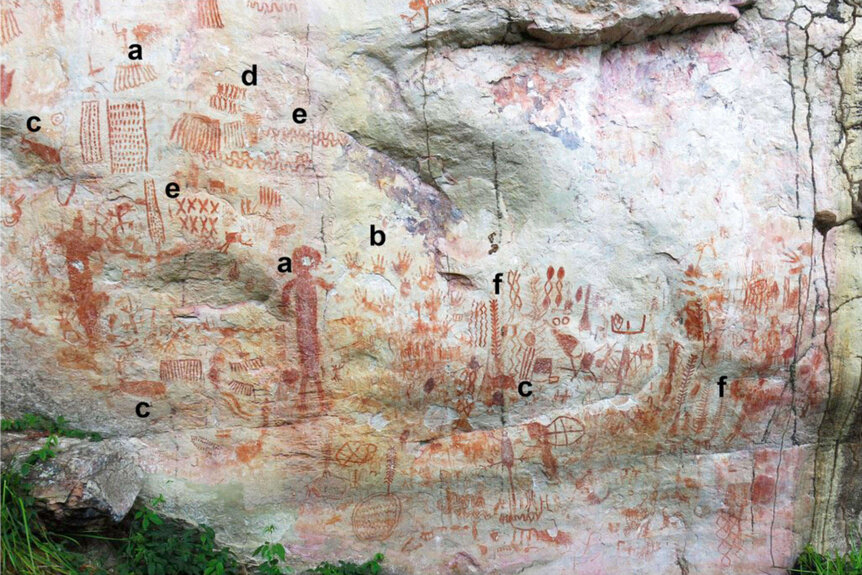Create a free profile to get unlimited access to exclusive videos, sweepstakes, and more!
Prehistoric pictographs show Ice Age sloths and mastodons living with ancient humans

Like some prehistoric comic book crudely drawn on rock walls in South America, archaeologists have stumbled across a collection of fantastic time capsule pictographs depicting representations of early Columbian Amazon peoples during the Pleistocene Epoch.
Scientists led by Dr. Mark Robinson from the Department of Archaeology at the University of Exeter as part of the European Research Council (ERC) project, Last Journey, discovered these striking images in a trio of distinct rock shelters in the Guaviare Department of Colombia.
The series of vivid drawings were created approximately 12,600 to 11,800 years ago and deliver solid evidence that the Amazon rainforest’s first inhabitants resided beside Ice Age mega-mammals such as the giant sloths, camelids, horses, mastodons, and three-toed ungulates sporting long trunks.
“These really are incredible images, produced by the earliest people to live in western Amazonia,” said Robinson. “They moved into the region at a time of extreme climate change, which was leading to changes in vegetation and the make-up of the forest.”
Dr. Robinson and his Last Journey colleagues recently published the findings of their fortuitous expedition in the online journal Quaternary International. The exact locations of the ancient paintings were in archaeological dig sites at Cerro Azul, Limoncillos, and Cerro Montoya in the Serranía La Lindosa, situated on the northern edge of the Colombian Amazon.
“The Amazon was still transforming into the tropical forest we recognize today,” Robinson added. “The paintings give a vivid and exciting glimpse in to the lives of these communities. It is unbelievable to us today to think they lived among, and hunted, giant herbivores, some which were the size of a small car.”
Drawn over the span of hundreds, or potentially thousands, of years, the prehistoric red pictures were conceived with mineral pigments like ochre, which explains the images' bright reddish-terracotta hues. Accented within geometric shapes are the scenes of daily life roughly 12,000 years ago, set amid anthropomorphic and zoomorphic representations of humans and now-extinct megafauna.
The dynamic tableaus show various hunting, ceremonial, and ritualistic activities, as well as encounters and interactions with plantlife, forests, and assorted savannah animals which include deer, tapirs, alligators, bats, monkeys, turtles, serpents, and porcupines.
At this period of time, the Ice Age’s glaciation cycle was on the wane and the climate was heating up, moving away from a varied region of savannahs, scrub forest, gallery forests, and tropical forest, and into the familiar type of canopied tropical Amazon forest observed in modern times.
“These rock paintings are spectacular evidence of how humans reconstructed the land, and how they hunted, farmed and fished,” said Professor José Iriarte, also from the Department of Archaeology at the University of Exeter.
“It is likely art was a powerful part of culture and a way for people to connect socially. The pictures show how people would have lived amongst giant, now extinct, animals, which they hunted.”

















